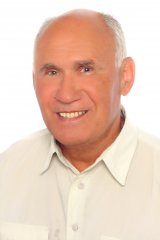Classical Cellular Automata: Mathematical Theory and Applications
In the book we present some of results of the work we have done in theory of classical Cellular Automata (CA) and their appendices during 1969–2013 in truth with considerable pauses. These results at present form essential constituent of the CA problems. In particular, we have studied such problems as the nonconstructability problem in CA, decomposition of global transition functions in CA, extremal constructive possibilities, complexity of finite configurations and global transition functions, parallel formal grammars along with languages defined by CA, the modelling problem in the classical CA, computer simulation of CA, certain applied aspects of CA, etc. At present, the CA problems is a rather well developed independent sphere of the mathematical cybernetics which has considerable field of numerous appendices. At that, with the equal right the CA problems can be considered as a component of such fields as discrete mathematics, the discrete parallel dynamic systems, complex systems
Genre: Math, Science
Genre: Math, Science
- Year:
- 2014
- 223 Views
Introduction Chapter 1. The basic concepts of classical cellular automata Chapter 2. Nonconstructability problem in classical cellular automata (classical CA models) 2.1. Preliminary information on the CA problematics 2.2. The nonconstructability types for classical CA models 2.3. Existence criteria of the basic nonconstructability types in classical CA models 2.4. The nonconstructability problem for finite CA models and CA models on splitting 2.5. The reversibility problem of dynamics of classical CA models 2.6. Algorithmical aspects of the nonconstructability problem and some connected questions of dynamics of classical CA models Chapter 3. Extremal constructive opportunities of classical cellular automata 3.1. Universal finite configurations in classical CA models 3.2. Self–reproduction of finite configurations in classical CA models Chapter 4. The complexity problem of finite configurations in classical CA models Chapter 5. Parallel formal grammars and languages determined by classical cellular automata (CA models) 5.1. The basic properties of the parallel languages, determined by classical cellular automata 5.2. Parallel grammars determined by classical CA models in comparison with formal grammars of some other classes and types 5.3. Parallel grammars defined by nondeterministic CA models 5.4. Algorithmical problems of the theory of parallel grammars, determined by classical CA models Chapter 6. The modelling problem in classical cellular automata (CA) along with the related questions 6.1. Concepts of modelling in classical CA 6.2. Modelling of the well–known formal processing algorithms of words in finite alphabets by means of CA models 6.3. Simulating of classical CA models by means of CA models of the same class 6.4. The formal parallel algorithms determined by classical one–dimensional CA models 6.5. Special questions of simulating in classical CA models concerning their dynamics 6.6. Sketch on sofrware oriented on CA simulating Chapter 7. The decomposition problem of global transition functions in classical CA models 7.1. Decomposition of special global transition functions in classical CA models 7.2. Some approaches to solution of the general decomposition problem of global transition functions 7.3. Questions of solvability of the decomposition problem for global transition functions of CA models 7.4. The complexity problem for global transition functions in classical CA models Chapter 8. Certain applied aspects of the CA problematics 8.1. Solution of the Steinhaus combinatory problem 8.2. Solution of the Ulam problem from number theory 8.3. Certain applied aspects of CA models in biological sciences Conclusion References About the author
Translation
Translate and read this book in other languages:
Select another language:
- - Select -
- 简体中文 (Chinese - Simplified)
- 繁體中文 (Chinese - Traditional)
- Español (Spanish)
- Esperanto (Esperanto)
- 日本語 (Japanese)
- Português (Portuguese)
- Deutsch (German)
- العربية (Arabic)
- Français (French)
- Русский (Russian)
- ಕನ್ನಡ (Kannada)
- 한국어 (Korean)
- עברית (Hebrew)
- Gaeilge (Irish)
- Українська (Ukrainian)
- اردو (Urdu)
- Magyar (Hungarian)
- मानक हिन्दी (Hindi)
- Indonesia (Indonesian)
- Italiano (Italian)
- தமிழ் (Tamil)
- Türkçe (Turkish)
- తెలుగు (Telugu)
- ภาษาไทย (Thai)
- Tiếng Việt (Vietnamese)
- Čeština (Czech)
- Polski (Polish)
- Bahasa Indonesia (Indonesian)
- Românește (Romanian)
- Nederlands (Dutch)
- Ελληνικά (Greek)
- Latinum (Latin)
- Svenska (Swedish)
- Dansk (Danish)
- Suomi (Finnish)
- فارسی (Persian)
- ייִדיש (Yiddish)
- հայերեն (Armenian)
- Norsk (Norwegian)
- English (English)
Citation
Use the citation below to add this book to your bibliography:
Style:MLAChicagoAPA
"Classical Cellular Automata: Mathematical Theory and Applications Books." Literature.com. STANDS4 LLC, 2024. Web. 26 Apr. 2024. <https://www.literature.com/book/classical_cellular_automata%3A_mathematical_theory_and_applications_1763>.




Discuss this Classical Cellular Automata: Mathematical Theory and Applications book with the community:
Report Comment
We're doing our best to make sure our content is useful, accurate and safe.
If by any chance you spot an inappropriate comment while navigating through our website please use this form to let us know, and we'll take care of it shortly.
Attachment
You need to be logged in to favorite.
Log In